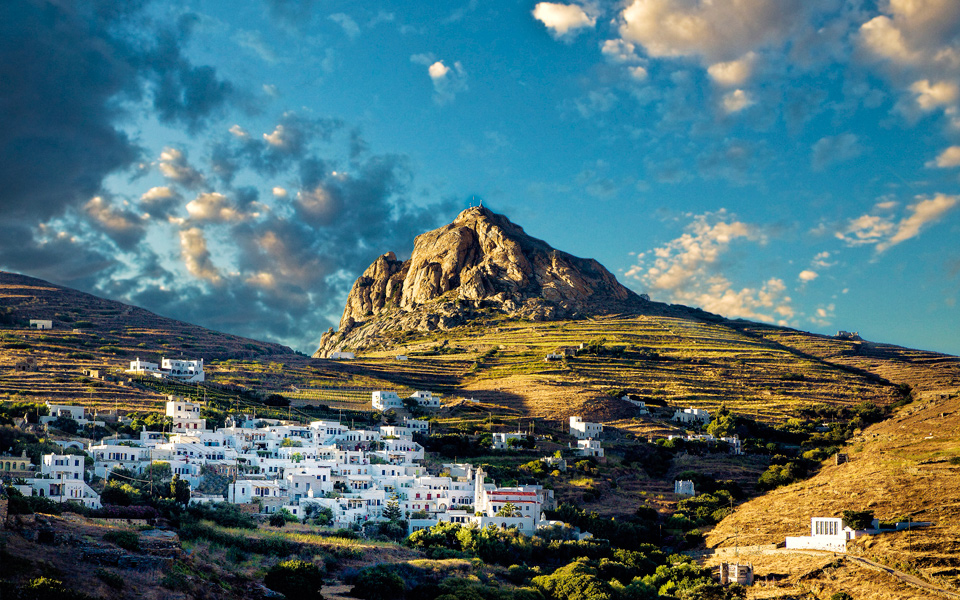1. Tripotamos
Village of customs
Set between three rivers, which gave this settlement its name, Tripotamos is one of Tinos’s oldest villages. It features traditional architecture, stone arches, narrow alleys and an abundance of surrounding greenery. The world-renowned modern philosopher and psychoanalyst Cornelius Castoriadis (1922-1997) maintained a holiday house here. If asked, villagers will gladly show the way to it. To them, he was more a down-to-earth neighbor than a prominent philosopher. Tripotamos is also well-known for a Christmas custom requiring estranged locals to sit at the same table and settle differences over a meal that may include dishes such as dolmades with rice, a dish symbolizing brotherhood, and beef tongue, to beat the habit of gossiping.
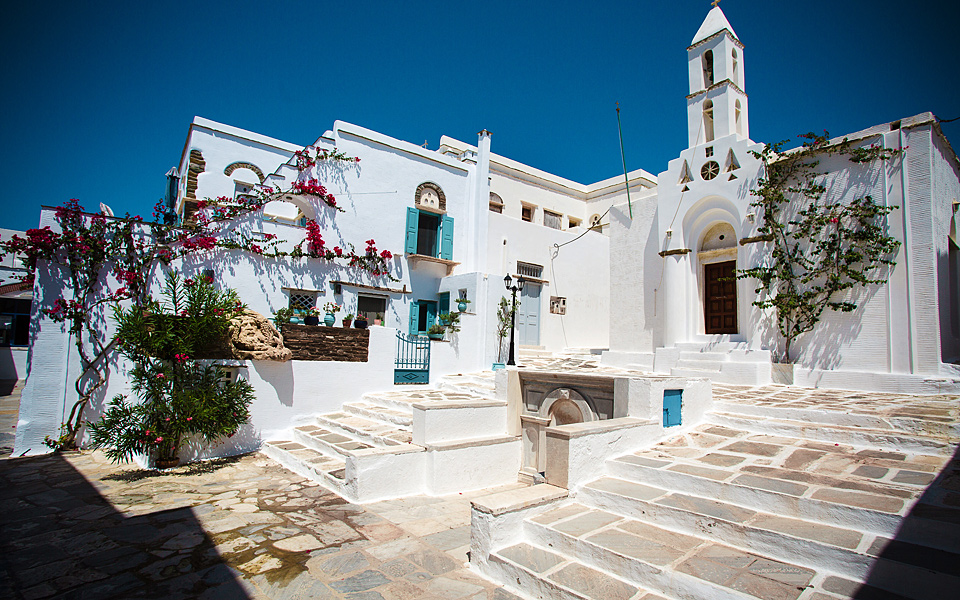
© Giannis Larios
2. Pyrgos
Marble art village
The largest island of Tinos, is renowned for its marble art traditions. Take a stroll around the alleys to marvel at works of marble art, including fountains and clerestories, and also visit the exceptional Museum of Marble Crafts.
Once done, settle at one of the village square cafes, under the large plane tree, for a Greek coffee and galaktoboureko (semolina custard in filo). The scenery is unlike any other in the Aegean.
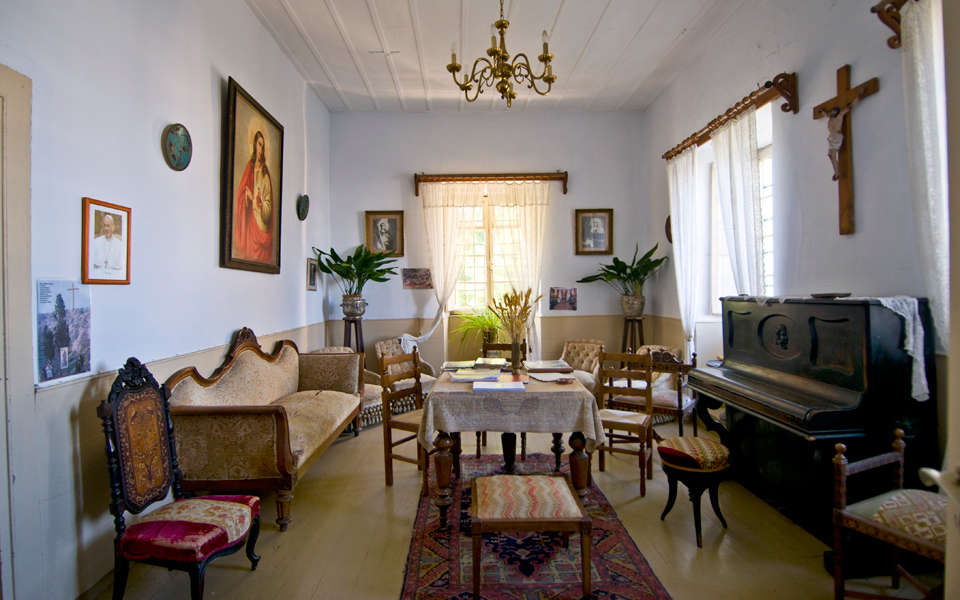
© Clairy Moustafellou
3. Loutra
In the footsteps of the Ursuline nuns
Though once full of life, Loutra, a village in the heart of Tinos, close to the imposing Xobourgo hill, nowadays maintains just a small population. Loutra holds a special place in the island’s history as an Ursuline monastery was built here in the 19th century. It operated an all-girls boarding school for students from all over Greece who studied literature and the arts. The facility is still there and nowadays houses a very interesting folklore museum, highlighting how productive the Ursuline nuns, representing a religious institute of the Catholic Church, really were.
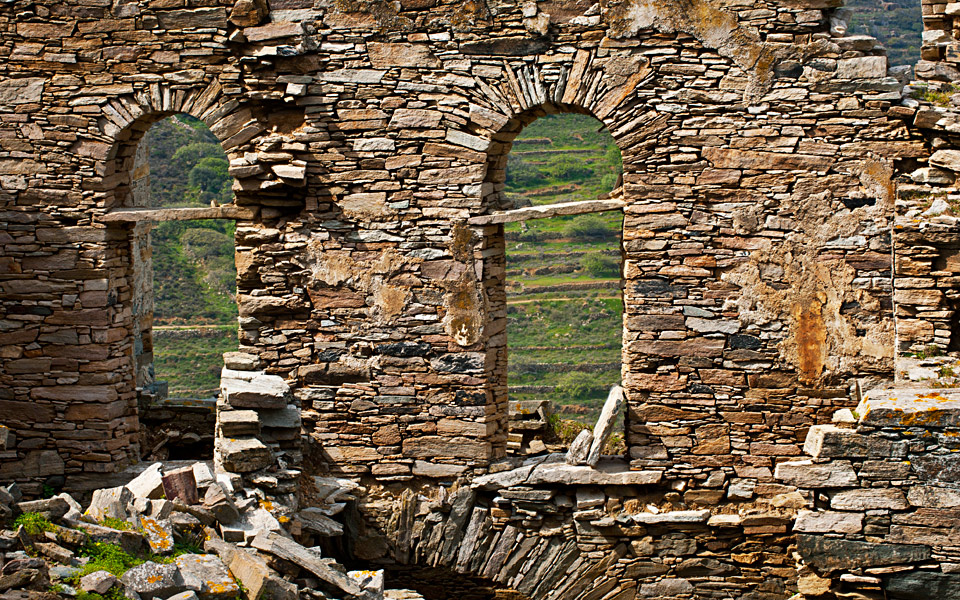
© Clairy Moustafellou
4. Monastiria
Charming abandoned village
Monastiria is a unique village that was abandoned in the 70s, as clearly depicted by the state of its derelict houses. Even so, the village is worth visiting for a look around the ruins. Beware the snakes or wild goats that may appear – the village is essentially theirs these days. An exception, the St Joseph’s Catholic Church, is well preserved and holds an annual celebration on March 19, highlighting how deep religion runs on this island.
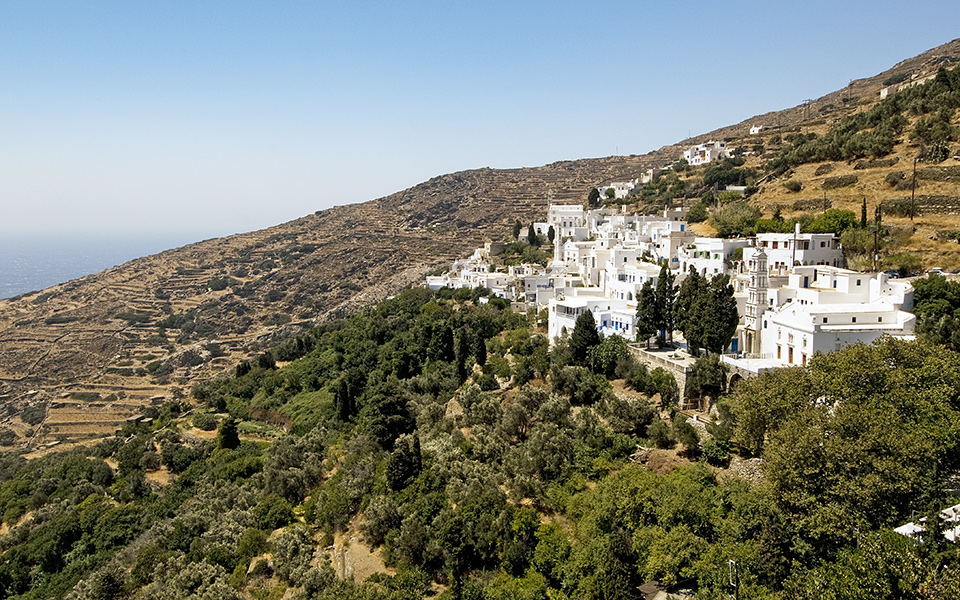
© Clairy Moustafellou
5. Kardiani
Magic of religious co-existence
Built on the slopes of Mount Pateles, 16 km northwest of the main town Chora, Kardiani is a village of rich greenery with lots of water and a square offering a marvelous view of the sea. The local population’s mix of Orthodox Christians and Catholics is this spot’s trademark feature, as reflected by the architecture and interior design of the churches. Visit the Orthodox Aghia Triada church and the Catholic Santissimos and Kioura churches to view the differing styles. After enjoying a pleasant stroll through the village alleys, top off your visit to Kardiani with meze, tsipouro and portokalopita (orange cake).
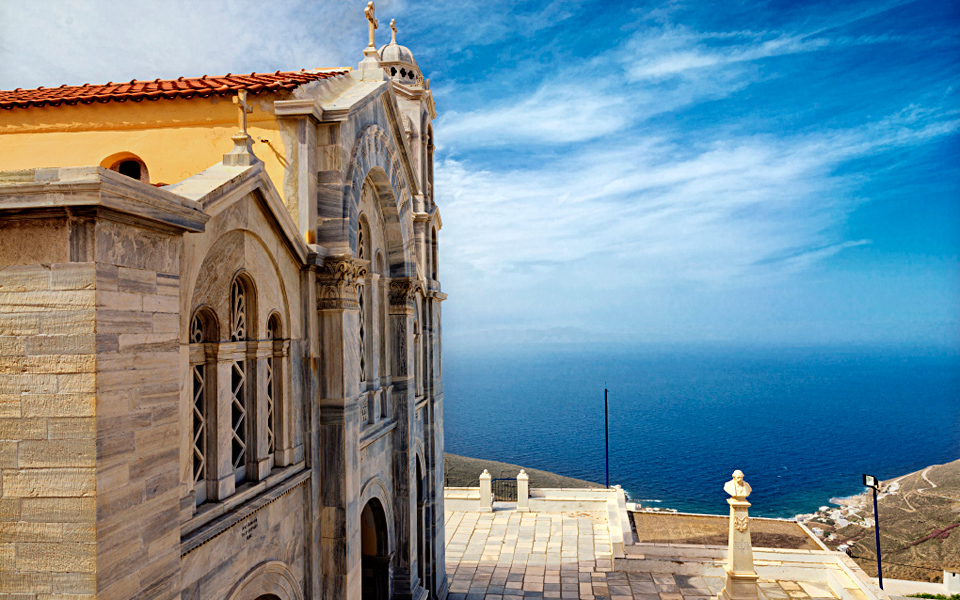
© Pericles Merakos
6. Ysternia
‘Terrace of the Aegean”
Pay a visit to Ysternia, one of the island’s biggest villages, for the exhibitions staged at the old primary school (Palio Dimotiko Scholio) as well the location’s exceptional view, which has led some to call the village the “Terrace of the Aegean”. Amazing views aside, this place also offers good food. Pick one of the tavernas and enjoy local culinary delights such as louza (cured and sliced pork), creamy cheese and a cold unpasteurized beer produced by the local Nissos microbrewery.
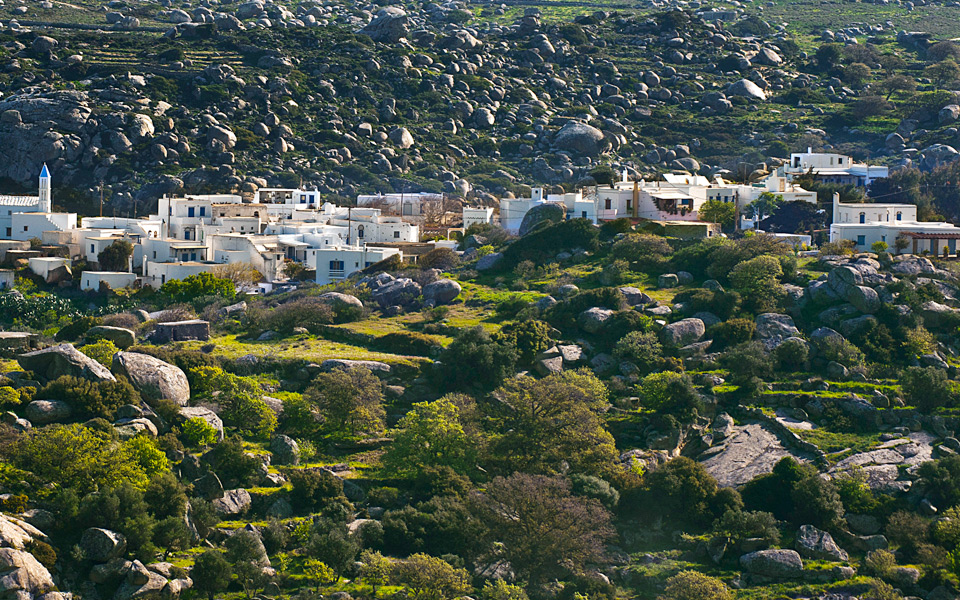
© Clairy Moustafellou
7. Volakas
Meteorite village
Volakas, also known as Volax, a village built on a small inland plateau, is made unique by the enormous granite boulders that surround it. Incongruous to the island’s landscape, these boulders look like they’ve just fallen from the sky. The island is also well-known for its skilled basket weavers. A hand-woven basket made by one of the craftsmen is a good souvenir and helps support the local economy.
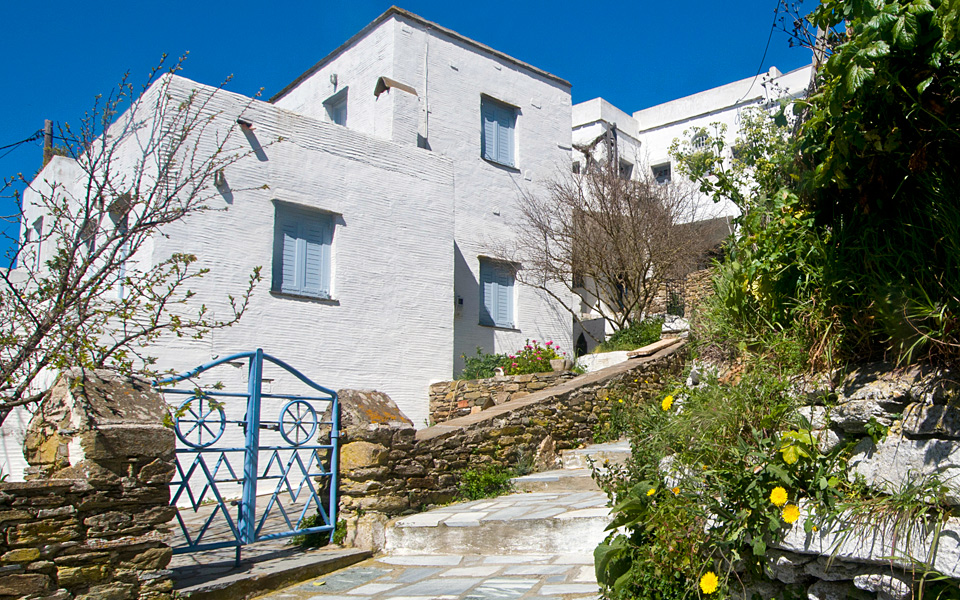
© Clairy Moustafellou
8. Dyo Choria
Walks along white cobbled paths
The highly impressive cobbled square, plane trees and traditional water fountains are the key features at Dyo Choria, a village created by the unification of two settlements, hence its name, meaning “two villages” in Greek. Take your time to wander the maze of alleys rather than just a quick look around – it’s worth it. The white-washed houses and multi-colored window and door frames create a delightful scene. A taverna at the Dyo Choria entrance, named after the village, serves good food should you work up an appetite. The spot, offering a fabulous view, is best-known for its veal in red sauce and steaks on the charcoal grill.

